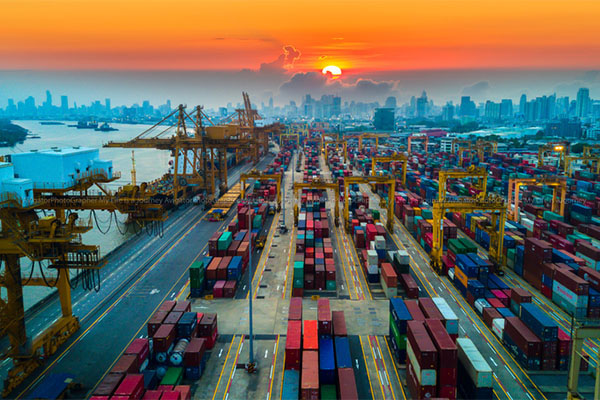Port Tracker report continues to highlight strong U.S.-bound import levels

Ongoing themes of very strong economic output and record-breaking United States-bound imports were prevalent in the most recent edition of the Port Tracker report, which was issued today by the National Retail Federation (NRF) and maritime consultancy Hackett Associates.
The ports surveyed in the report include: Los Angeles/Long Beach; Oakland; Tacoma; Seattle; Houston; New York/New Jersey; Hampton Roads; Charleston, and Savannah; Miami; Jacksonville; and Fort Lauderdale, Fla.-based Port Everglades.
Authors of the report explained that cargo import numbers do not correlate directly with retail sales or employment because they count only the number of cargo containers brought into the country, not the value of the merchandise inside them, adding that the amount of merchandise imported provides a rough barometer of retailers’ expectations.
The report said that U.S.-bound retail container imports are still seeing double-digit growth, driven by strong consumer demand.
“The year-over-year growth we saw this spring was off the charts because the comparisons were against a time when most stores were shut down due to the pandemic,” NRF Vice President for Supply Chain and Customs Policy Jonathan Gold said in a statement. “But we’re continuing to see strong growth even as we enter a point when stores had begun to reopen last year. That’s a sign of the tremendous demand from consumers. The challenge for retailers and supply chains is keeping shelves stocked as port congestion and other supply chain disruptions continue to impact the industry and the economy more broadly.”
For May, the most recent month for which data is available, import volumes came in at 2.33 million TEU (Twenty-Foot Equivalent Units), an 8.6% increase over April and a 52.2% annual increase. What’s more, this tally marked a new record-high for any month, going back to when NRF first started tracking imports, topping the previous high, of 2.15 million TEU, which was set in April.
Looking at June and July and the coming months, Port Tracker issued the following projections:
- June, at 2.15 million TEU, for a 33.8% annual gain;
- July, at 2.21 million TEU, for a 15.1% annual gain;
- August, at 2.3 million TEU, for a 9.4% annual gain;
- September, at 2.16 million TEU, for a 2.5% annual gain;
- October, at 2.13 million TEU, for a 3.7% annual decrease [which would mark the first annual monthly decline since July 2020]; and
- November, at 2.06 million TEU, for a 2% annual decrease
Should these projections hold, import totals for the first half of 2021 would be up 35.6% to 12.8 million TEU, with 2021 estimated to be up 16.7%, to 22 million TEU.
“Operational constraints brought about by the COVID-19 pandemic combined with the surge in consumer demand have severely strained the logistics supply chain,” Hackett Associates Founder Ben Hackett wrote in the report. “The challenges have stretched ports’ ability to plan for shifts in vessel capacity and pressures on both port-side and land-side infrastructure. The splurge in newbuilding orders for ships with 23,000-plus TEU capacity will bring further challenges.”
What’s more, he also pointed to global issues, including the China-based Yantian port dealing with operational constraints related to recent COVID-19 outbreaks, coupled with American and European ports having been up against major congestion, at a time when economic growth and consumer demand are still at high levels.
Hackett added that the growth in the last year has put unprecedented pressure on importers, carriers and domestic transportation providers alike.

Article Topics
Global Trade News & Resources
Baltimore suing ship that crashed into bridge, closing port, costing jobs UPS reports first quarter earnings decline Supply Chain Stability Index sees ‘Tremendous Improvement’ in 2023 Descartes March Global Shipping Report highlights ongoing steady volume momentum U.S.-bound import growth track remains promising, notes Port Tracker report EU Update 2024: Crises lead to growth Examining the impact of the Taiwan earthquake on global supply chain operations More Global TradeLatest in Logistics
2024 State of Freight Forwarders: What’s next is happening now Ryder opens up El Paso-based multi-client facility logistics facility Autonomous mobile robots (AMRs) on a mission to automate Equipment batteries get a jolt What’s next for trucking? April manufacturing output takes a step back after growing in March 2024 Parcel Express Roundtable: Lower volumes, pricing shifts, and network changes define the market More LogisticsAbout the Author
Subscribe to Logistics Management Magazine

Find out what the world's most innovative companies are doing to improve productivity in their plants and distribution centers.
Start your FREE subscription today.
April 2023 Logistics Management

Latest Resources














